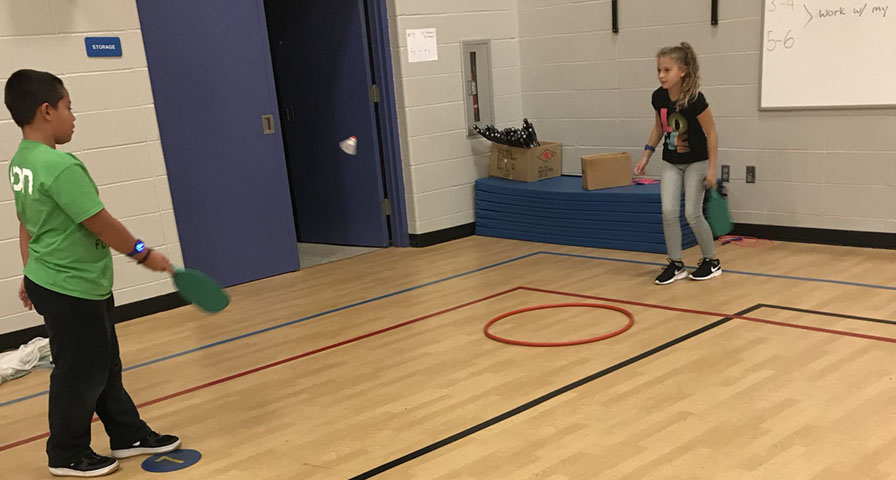Crestview School of Inquiry (Iowa) teacher Chris Amundson’s introduction of wearable technology has provided his students with added motivation to increase their effort during his physical education classes.
As part of a West Des Moines Public School district-wide initiative, Amundson introduced the IHT Zone wrist heart rate monitors at the beginning of this school year. The students embraced the technology quickly, improving their performance and making sure the teacher knows the devices have become an integral part of their class.
“They get mad at me if they come in the gym and the Zones aren’t set up and ready for them to use,” Amundson said on Jan. 17. “They are mad that they have to go and do something else first before they can put them on.”
Why does the wrist-based heart rate monitor that shows both actual heart rate and the color of the heart rate zone (blue for resting, yellow for moderate activity and red for vigorous activity) provide so much motivation to his young students?
“The color is really motivating to an elementary kid,” he said. “They don’t like to see the blue (even if we are doing something like yoga) and they want to be in the yellow and red. Most elementary kids enjoy PE anyway but this is an easy way to push them to work even harder.”
Crestview received sets of the heart rate monitors and the assessment tools in the IHT Spirit System’s Assessment Measures software as part of a district-wide initiative to make students more aware of the role heart rate plays in physical fitness. As he’s evolved as a teacher, Amundson’s fallen back on a lifelong passion for biology and began looking at physical education from that standpoint a few years ago.
“I gravitate toward things that are science-based, so heart rate monitors….I’ve always wanted to find the best ones but I’ve also wanted to find ones that are efficient with elementary students,” he explained.
He tried several, including chest strap-based monitors before introducing the wrist-based Zones this year. Depending on the lesson or skills he’s assessing, Amundson sets goals for students – minutes they should be exercising with their heart rates in the moderate to vigorous activity zone – and the students have done the rest. As the third-through-sixth grade students finished up a most recent floor hockey lesson, Amundson saw the type of student engagement, and motivation, he’s been looking for throughout his first year with the heart rate monitors.
“I had kids who were standing there extra long as they were [picking up their Zones at the beginning of class],” he said. “I walked over to figure out what they were doing and they were all talking about how many minutes they needed to get to their goal for today; what they needed to do to push themselves.”
He’s proud that the skills students are developing in class are becoming intrinsic.
“I want them to understand that this is important and something they should continue once they are out of school,” he said.


